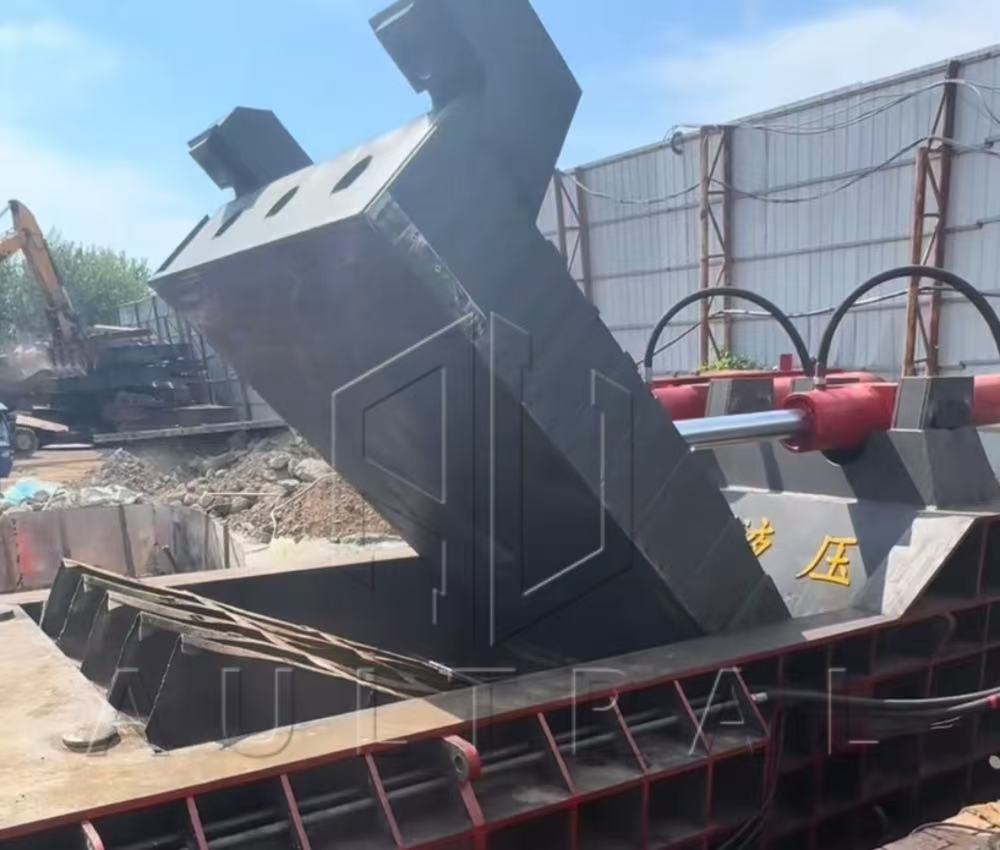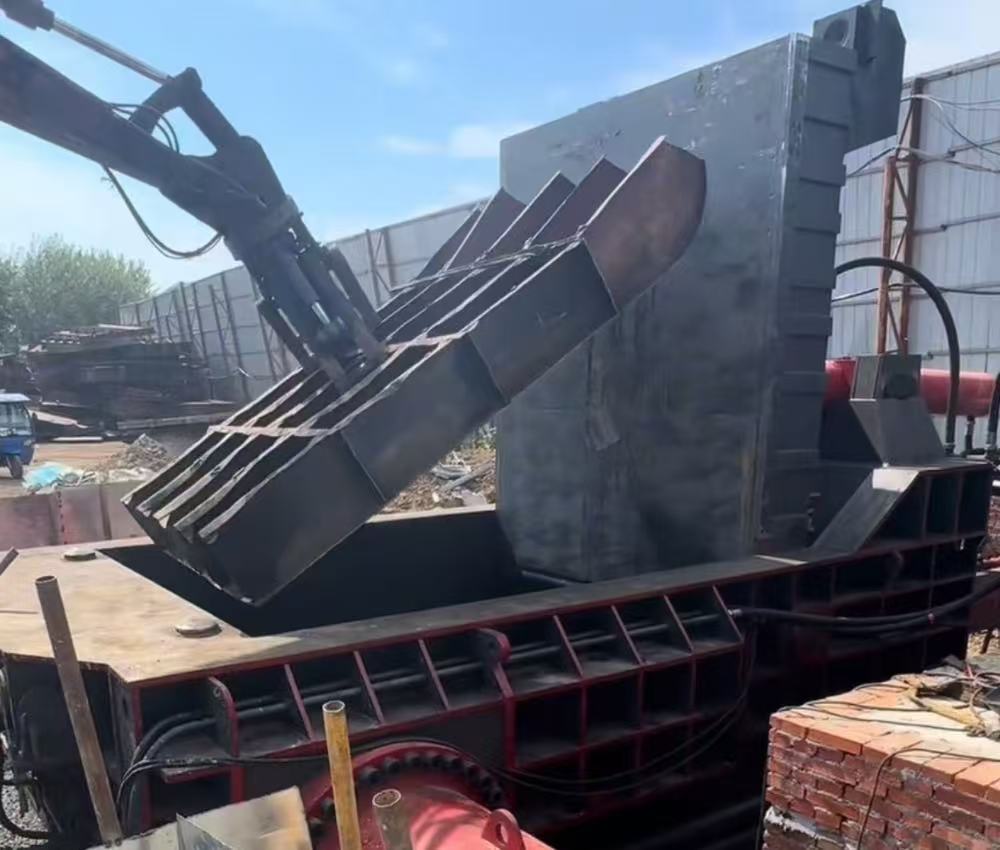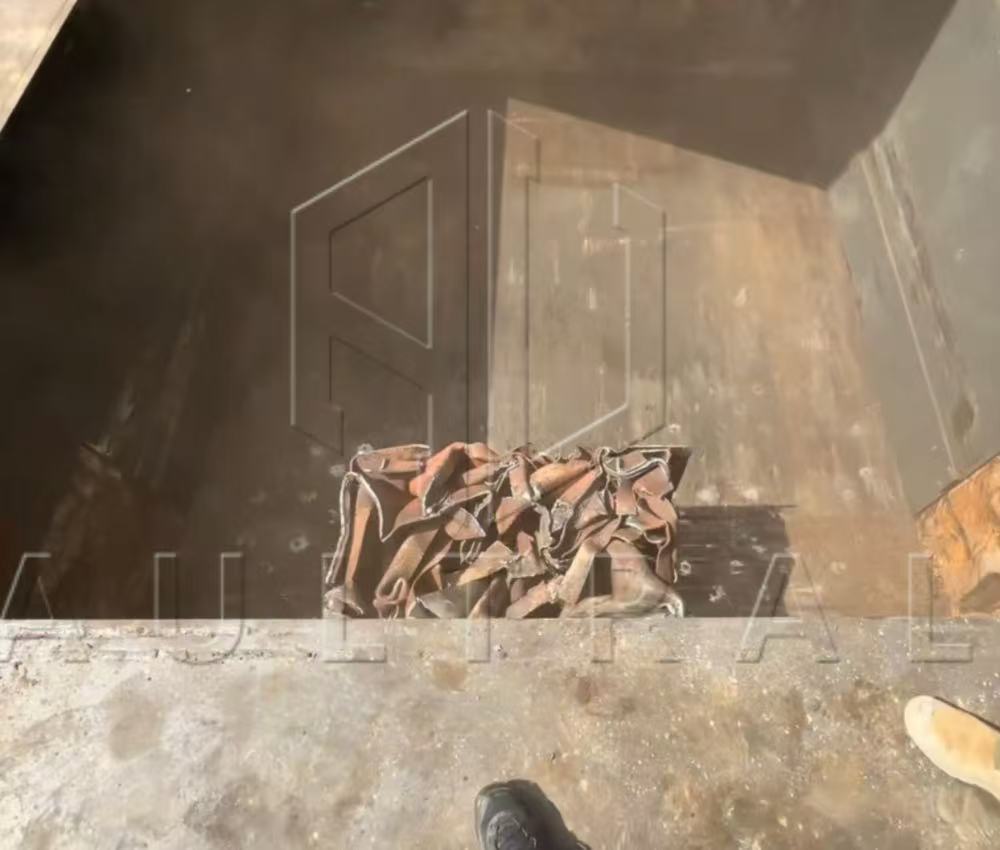Introduction
In the modern recycling industry, metal baling machines play a crucial role in processing scrap metal efficiently. However, not every business needs a brand-new baler. For many recycling plants, scrap yards, and small metal processing workshops, a used metal baler machine can be a smart, cost-effective, and environmentally responsible choice.
Buying a second-hand baler does not mean compromising on quality — it means making a sustainable investment that benefits your business, your community, and the planet.
What Is A Metal Baler Machine?
A metal baler machine is a hydraulic recycling machine used to compress scrap metal such as steel, aluminum, copper, and iron into compact bales for easier storage, transportation, and recycling.
Depending on the model, balers can be vertical, horizontal, or fully automatic, and they are widely used in recycling centers, metal processing plants, and scrap yards.
Why Consider A Used Metal Baler Machine?

1. Significant Cost Savings
One of the most obvious advantages of purchasing a used metal baler is lower investment cost.
A used machine typically costs 30–60% less than a new one, making it ideal for small or medium-sized recycling operations with limited budgets.
By investing in a pre-owned unit, companies can allocate more funds to other essential operations like transportation, sorting, or labor.
2. Proven Performance And Reliability
Many second-hand balers have already proven their reliability in long-term industrial use.
If the machine has been well-maintained and refurbished by professionals, it can perform almost like new.
Reputable suppliers inspect, test, and replace critical components such as hydraulic systems, seals, and motors before resale. This ensures the used baler operates safely and efficiently for years.
3. Faster Delivery And Installation
New machines often require production time, shipping, and testing, which can delay operations by several weeks or months.
In contrast, used balers are ready for immediate delivery and installation, allowing your recycling line to start working faster.
4. Lower Depreciation
Just like cars, new balers lose a large portion of their value within the first year.
Used equipment, however, has already gone through this depreciation curve — meaning you can sell it later with minimal loss if you decide to upgrade.
Environmental Benefits Of Using A Used Metal Baler

1. Reduced Manufacturing Impact
Manufacturing new hydraulic balers requires steel, copper, and other materials that consume high energy and generate carbon emissions.
By reusing and refurbishing existing machines, you help reduce the environmental footprint of industrial production.
2. Promoting Circular Economy
Purchasing a second-hand baler supports the circular economy, where equipment and materials are reused, recycled, and repurposed instead of discarded.
This practice reduces waste and conserves natural resources, aligning your business with global sustainability goals.
3. Lower Energy Waste
Producing a new metal baler consumes much more energy than reconditioning a used one.
By choosing a used machine, you are essentially recycling machinery, minimizing the overall environmental impact of your business.
Social And Economic Impact

1. Supporting Local Employment
Many refurbished balers are rebuilt and serviced by local technicians and workshops.
Purchasing from local suppliers helps support skilled labor and strengthens the recycling industry network in your region.
2. Affordable Access For Small Businesses
Used balers make recycling equipment accessible to smaller companies that cannot afford new machinery.
This democratizes the recycling industry and promotes broader environmental participation.
3. Encouraging Responsible Consumption
Opting for a used baler reflects a responsible business mindset — reducing waste, reusing valuable assets, and maximizing equipment lifespan.
How To Use A Used Metal Baler Safely
While second-hand machines are reliable when properly maintained, safe operation is essential.
1. Inspect Before Use
Always check for oil leaks, loose hoses, or abnormal noises before starting the baler.
Ensure the hydraulic system pressure and control buttons function correctly.
2. Follow Manufacturer’s Guidelines
Even for used machines, original manuals and instructions must be followed strictly.
Pay attention to operating limits such as maximum bale size, pressure, and cycle time.
3. Schedule Regular Maintenance
Hydraulic systems require routine inspection, oil replacement, and cleaning.
A maintenance schedule ensures safety, performance, and extended service life.
4. Train Your Operators
Only trained personnel should operate the baler.
Proper training prevents accidents and improves efficiency in daily operations.
How To Choose The Right Used Metal Baler
Selecting the right second-hand baler depends on your scrap type, volume, and operation size.
1. Define Your Material Type
Different balers are designed for different metals:
-
Iron and steel: Horizontal or box-type hydraulic balers
-
Aluminum cans: Vertical balers or small horizontal models
-
Copper and brass: High-pressure hydraulic balers with stronger compression
2. Check The Bale Density Requirement
If you need high-density bales for export or smelting, choose a high-pressure horizontal baler.
For lighter applications, a vertical model may be sufficient.
3. Evaluate Machine Condition
Inspect the machine’s hydraulic cylinders, oil pump, motor, and frame.
Ask for maintenance records or refurbishment details from the supplier.
4. Consider After-Sales Service
Even for used equipment, a reliable supplier should offer technical support, spare parts, and remote guidance.
Choosing a seller with a proven service track record ensures peace of mind.
5. Match Capacity To Your Operation
Overcapacity wastes energy, while undercapacity limits efficiency.
Estimate your daily or monthly scrap volume and choose a machine that can handle 10–20% more than your expected workload.
Practical Example
For instance, if your scrap yard processes 5 tons of steel scrap per day, a used 100-ton horizontal baler may be ideal.
It offers strong compression, easy operation, and durable structure — all at half the cost of a new machine.
When properly refurbished, such a baler can serve reliably for another 5–10 years, delivering excellent return on investment.
Long-Term Value Of A Used Metal Baler
When you invest in a used metal baler, you are not only saving money today — you are building long-term operational value. Most industrial-grade balers are designed for heavy-duty use, with strong steel structures and replaceable hydraulic parts. With regular maintenance, a refurbished baler can easily deliver consistent performance for more than a decade.
Moreover, the market for second-hand equipment is continuously growing, meaning that when you decide to upgrade later, your used baler still retains resale value. Many recyclers prefer to trade in their existing machines rather than scrap them, extending the equipment life cycle and reducing industrial waste.
In short, choosing a used baler is not just a temporary cost-saving choice. It is a sustainable investment strategy that supports profitability, resource efficiency, and environmental responsibility at the same time.
Conclusion
A used metal baler machine is not just a budget-friendly option — it’s a sustainable business decision.
It reduces waste, supports local industries, minimizes environmental impact, and enables small recyclers to grow responsibly.
By carefully selecting, inspecting, and maintaining your used baler, you can enjoy the same performance as a new machine while contributing to a greener planet.
In the recycling world, every bale counts — and so does every decision toward sustainability.
